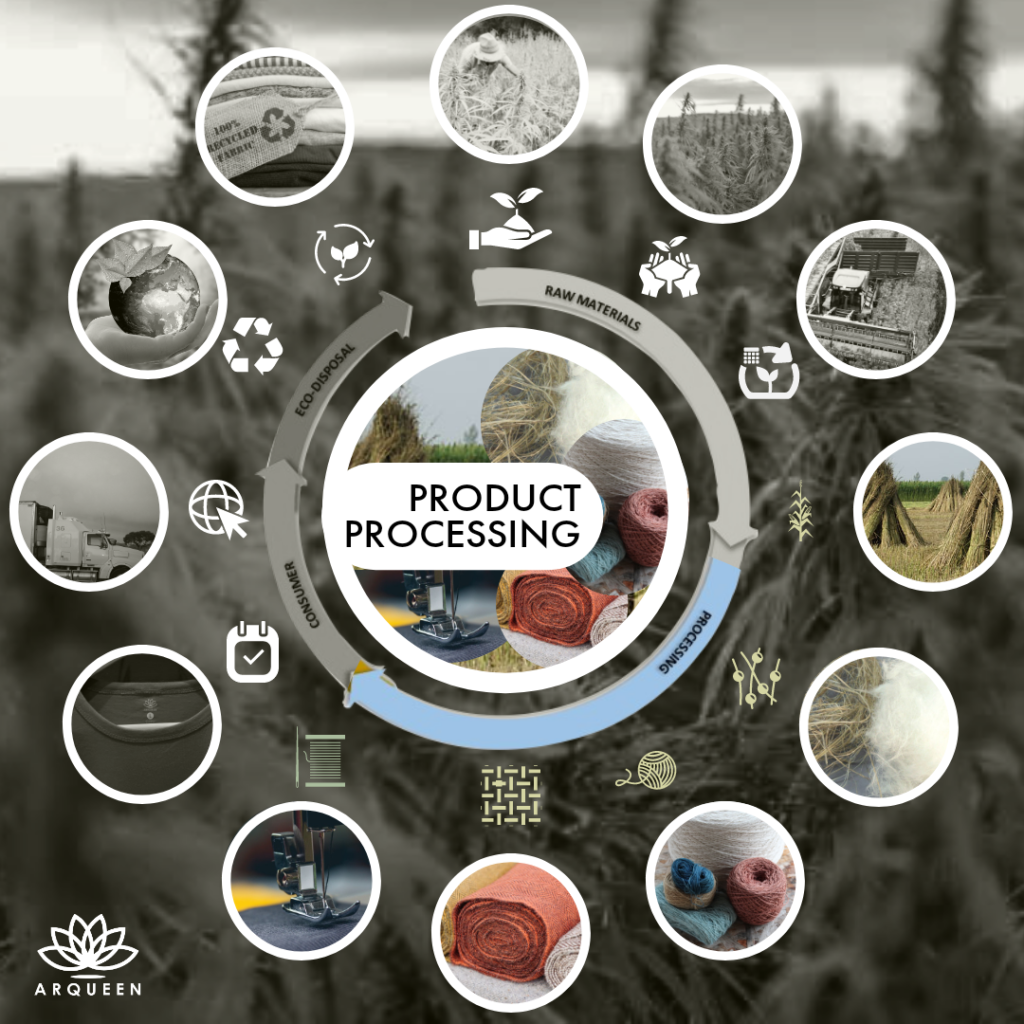The process outlined below is the tried and trusted way to create the fibres necessary for hemp clothing. The result is an extremely strong fabric that’s durable enough to last many years. Let us dig into the next session of our Fibre to Fashion Series.
RETTING
This process involves using moisture and microbes to break down the pectin (chemical bonds) that hold the hemp stem together. This leads to easier separation of the bast from the woody core, called the shiv or hurd. While some manufacturers perform retting via the direct use of enzymes, most follow one of these three methods:
- Water Retting: This includes soaking the stems in a water source such as a pond, stream, or special water tank. Water retting can take up to 10 days. It works best when you use warm water filled with bacteria.
- Field Retting: The farmer leaves the hemp on the ground to decompose naturally. This process can take 4 – 6 weeks and requires close monitoring.
- Winter Retting: Conditions of temperature and moisture usually are most favorable early in the fall. As winter sets in, low temperature limits bacterial activity even though adequate moisture is present. Hemp can winter up to 4 months without suffering serious damage, but often it will be over-retted. Alternate freezing and thawing spells gives best results in winter field-retting.
Currently, there is no industry standards in retting hemp for textile clothing. However our preferred method is winter retting due to the favourable conditions here in Alberta, Canada.
After finishing the retting step, the farmer dries the stalk to the point where the moisture content is below 15%. Then they bail the stalk and get it ready for the next part of the process.
FIBRE PROCESSING
This step involves passing the stalks through fluted rollers. They crush and break the hurd into small pieces and separate some of the fibre called decortication. This machine enables workers to keep the leaves on the stalks during the breaking process.
Scutching – The next step involves beating the broken stems. By ‘scutching’ them in this manner, you separate the fibers you want from the hemp plant’s woody core.
Hackling -This is the term for combing the stems to get rid of any unwanted particles. It also ensures the fibres are further aligned into a long sliver. The short fibres produced during separation are called tow. The long fibres are called line, and a single strand can reach over five meters long.
YARN PROCESSING
Roving – In this step, the workers twist the sliver and draw it out to boost its strength. They wind it on spinning bobbins to get it ready for the last piece of the puzzle.
Spinning – This is the process of twisting and drawing out the hemp fibres. The goal is to create a smooth, continuous yarn. When using hemp, you can perform wet or dry spinning. Wet spinning is best for finer yarn, while dry spinning is ideal for coarser yarns. In general, manufacturers use wet spinning because hemp offers bast fibres. It is to complete the process via manual spinning using a spindle. This is a thin, round rod with tapered ends. It also has a weight attached to it.
TEXTILE PROCESSING
Weaving – After the raw materials have been converted into yarn, they’re ready for the next step in the production process, which involves joining these individual threads together to form fabric. This process of joining the yarn together is called weaving. Weaving is done on a machine known as a loom and requires two sets of yarn. The first set, called the warp set, is strung tautly across a metal frame. The second, called the weft, is connected to metal rods, with one thread per rod.
Cleaning – After the fabric has been woven, it’s removed from the loom and is ready for the final step. Fabric that’s fresh off the loom is called greige, and it looks nothing like the crisp white sheets or clothing you’re used to. It’s discolored and full of impurities, seed particles and debris. Before it can be transformed into useful textiles, it must go through a series of cleaning.
GARMENT PRODUCTION
Ready, Set, Let Us Design and Produce Your Clothes.
Contact us at operations@arqueen.ca

#hemp #fashion #cultivation #motivation #Sustainable #sustainability #arqueenyyc #calgary #rockyviewalberta #plants #enviroment
